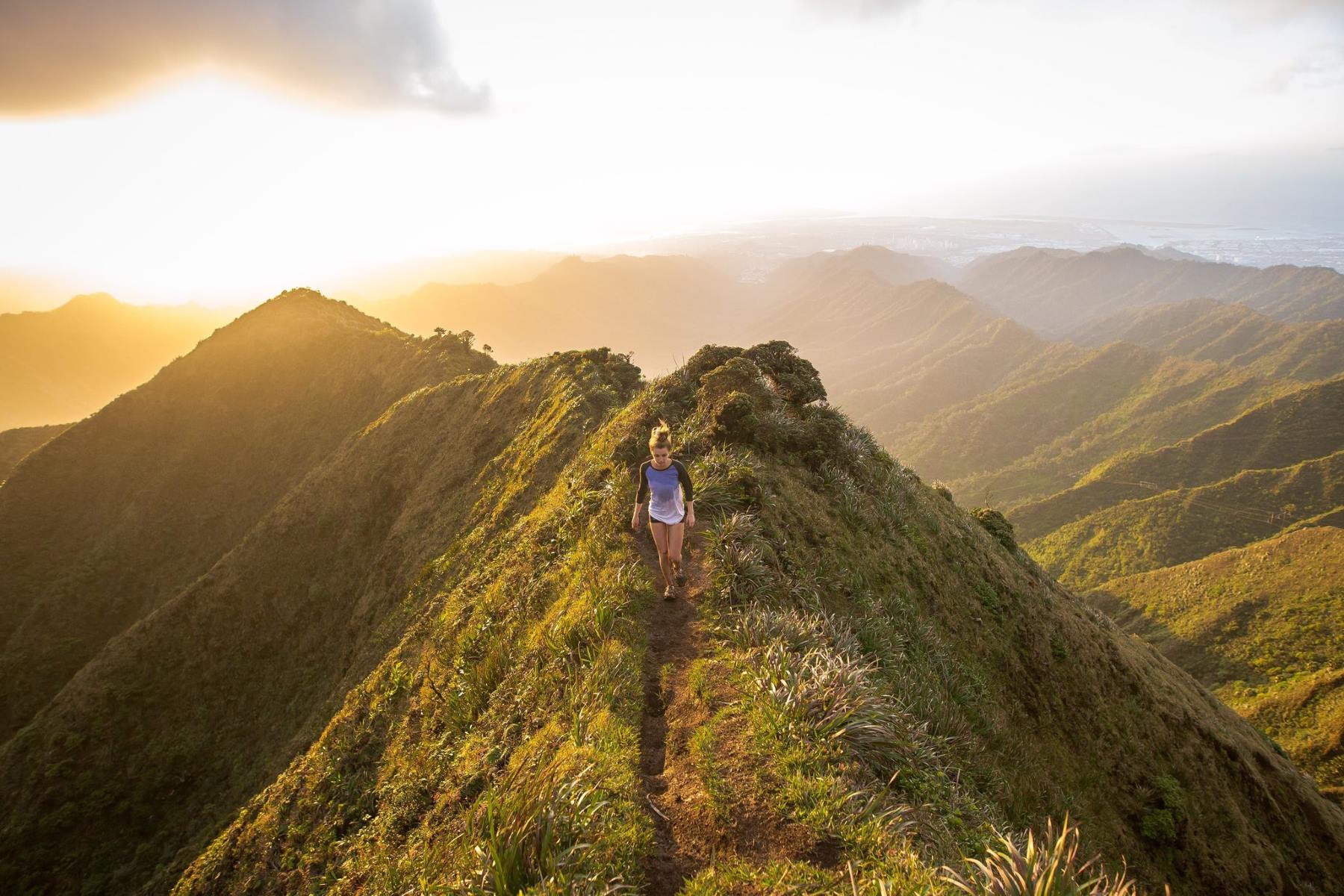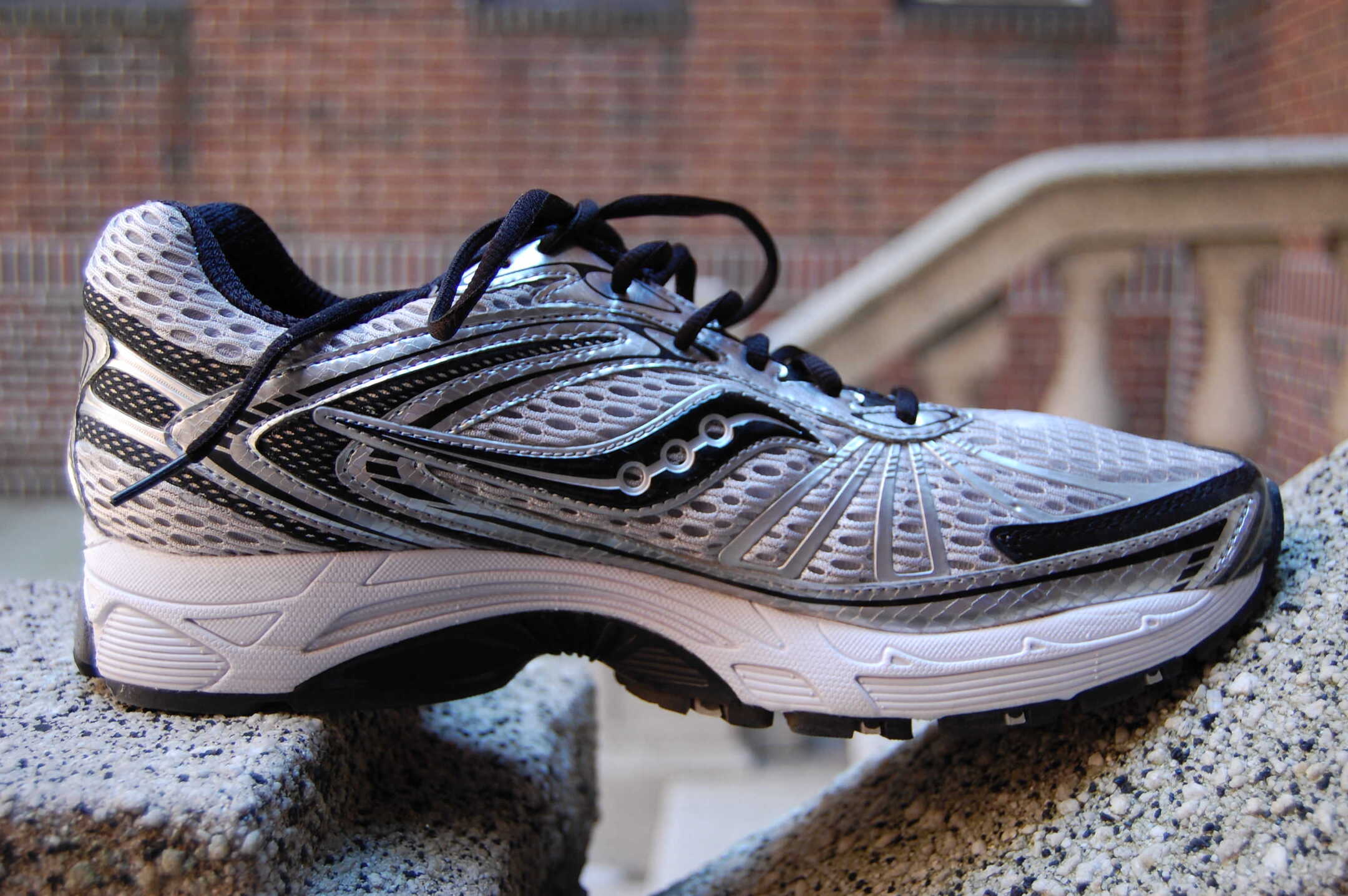Home>Running Paths & Locations>Trail Running>The Ultimate Guide To Fell Running


Trail Running
The Ultimate Guide To Fell Running
Published: February 28, 2024
Discover the ultimate guide to trail running with expert tips, gear recommendations, and training advice for a thrilling outdoor adventure. Whether you're a beginner or seasoned runner, this comprehensive guide has everything you need to conquer the trails.
(Many of the links in this article redirect to a specific reviewed product. Your purchase of these products through affiliate links helps to generate commission for Therunningadvisor.com, at no extra cost. Learn more)
Table of Contents
Introduction
Welcome to the exhilarating world of fell running! If you're seeking an adrenaline-pumping, nature-immersed running experience, then fell running is the perfect fit for you. This unique form of running takes place in the rugged and picturesque terrain of upland areas, offering a thrilling blend of physical challenge and breathtaking natural beauty.
Fell running, also known as hill running or mountain running, has a rich history deeply rooted in the mountainous regions of the United Kingdom. It has evolved from a practical means of traversing challenging landscapes to a beloved sport that attracts enthusiasts from around the globe. The allure of fell running lies not only in the physical demands it presents but also in the profound connection it fosters between athletes and the untamed wilderness.
As you delve into the world of fell running, you'll discover the sheer joy of conquering steep ascents, navigating rocky paths, and descending with agility and finesse. The unpredictable nature of the terrain adds an element of adventure, making each run a unique and invigorating experience. Whether you're drawn to the rugged peaks of the Lake District, the rolling hills of the Pennines, or the majestic mountains of Scotland, fell running offers an unparalleled opportunity to immerse yourself in the raw, unspoiled beauty of the natural world.
In this comprehensive guide, we'll explore every facet of fell running, from its historical origins to the essential gear, training techniques, safety considerations, and mental preparation required to excel in this demanding yet immensely rewarding pursuit. Whether you're a seasoned trail runner looking to expand your horizons or a newcomer eager to embrace a new challenge, this guide will equip you with the knowledge and insights needed to embark on your fell running journey with confidence and enthusiasm.
So, lace up your trail shoes, breathe in the crisp mountain air, and get ready to embark on an unforgettable adventure through the untamed landscapes of fell running. Let's dive into the heart of this captivating sport and uncover the secrets to mastering the art of running wild and free amidst nature's most awe-inspiring playgrounds.
History of Fell Running
Fell running traces its origins to the rugged and mountainous landscapes of the United Kingdom, where the sport emerged as a means of traversing challenging terrains for practical purposes. The history of fell running is deeply intertwined with the traditions and lifestyles of the communities inhabiting these upland areas, where running across steep and undulating terrain was a necessity rather than a recreational pursuit.
The roots of fell running can be traced back to the 11th century, when shepherds and farmers in the Lake District and other mountainous regions relied on their agility and endurance to navigate the unforgiving terrain while tending to their flocks and carrying out daily tasks. This practical form of running, often referred to as "guiding," involved traversing steep slopes, rocky paths, and open moorland, laying the foundation for the development of fell running as a sport.
The 19th century marked a significant shift in the perception of fell running, as it transitioned from a utilitarian activity to a competitive and recreational pursuit. The rise of organized fell races, often associated with local agricultural fairs and festivals, provided a platform for individuals to showcase their speed, stamina, and agility in the challenging mountain environment. These early races, characterized by their grassroots nature and community participation, laid the groundwork for the formalization of fell running as a recognized sport.
In 1970, the iconic annual event known as the Borrowdale Fell Race was established, marking a pivotal moment in the history of fell running. This race, renowned for its demanding course and breathtaking scenery, garnered widespread attention and attracted a growing number of participants, contributing to the popularization of fell running as a competitive and recreational pursuit.
Over the years, fell running has evolved into a beloved sport with a vibrant community of enthusiasts and athletes who embrace the physical and mental challenges posed by the untamed landscapes. The sport's rich history, deeply rooted in the traditions and heritage of the upland regions, continues to inspire individuals to test their limits and forge a profound connection with the raw, unspoiled beauty of the natural world.
As fell running continues to captivate the hearts and minds of runners around the world, its historical legacy serves as a testament to the enduring spirit of adventure, resilience, and camaraderie that defines this exhilarating pursuit.
Essential Gear for Fell Running
When venturing into the rugged and challenging terrain of fell running, having the right gear can make all the difference in ensuring a safe, comfortable, and enjoyable experience. From specialized footwear designed for optimal grip and stability to protective clothing that shields against the elements, the essential gear for fell running encompasses a range of carefully selected items tailored to the unique demands of mountainous landscapes.
Trail Shoes
A fundamental component of fell running gear is a reliable pair of trail running shoes specifically engineered for off-road performance. These shoes feature aggressive outsoles with deep lugs to provide exceptional traction on varied surfaces, including loose gravel, muddy trails, and rocky terrain. Additionally, the shoes offer sturdy toe protection and a secure fit to enhance stability and minimize the risk of injury during steep descents and technical ascents.
Waterproof Clothing
Given the unpredictable nature of mountain weather, waterproof and breathable outerwear is indispensable for fell running. Lightweight yet durable waterproof jackets and pants shield runners from rain, wind, and moisture, ensuring comfort and protection in adverse conditions. The garments' breathability allows perspiration to escape, preventing overheating and maintaining a comfortable body temperature throughout the run.
Hydration Pack
Staying hydrated during fell running is paramount, making a hydration pack an essential piece of gear. These packs, designed to comfortably carry water and other essentials, feature adjustable straps and ergonomic designs to minimize bounce and discomfort while running. Some models also include storage compartments for nutrition, safety supplies, and extra layers, offering convenience and peace of mind during longer excursions.
Navigation Tools
In the expansive and often remote landscapes of fell running, reliable navigation tools such as a map, compass, or GPS device are crucial for route planning and orientation. These tools empower runners to navigate unfamiliar terrain with confidence, ensuring they stay on course and safely reach their intended destinations.
Safety Equipment
Carrying essential safety equipment, including a whistle, emergency blanket, and first aid supplies, is a non-negotiable aspect of fell running gear. These compact and lightweight items provide added security in the event of unforeseen challenges or emergencies, allowing runners to respond effectively to potential hazards and ensure their well-being while exploring remote and rugged environments.
Equipped with the right gear, fell runners are poised to embrace the exhilarating challenges and breathtaking vistas of mountainous terrain, knowing they have the essential tools to navigate, endure, and thrive in the untamed wilderness.
Training for Fell Running
Training for fell running demands a holistic approach that encompasses physical conditioning, mental fortitude, and technical skills tailored to the unique demands of mountainous terrain. Whether you're a seasoned trail runner seeking to transition to fell running or a newcomer eager to embrace the challenges of upland landscapes, a well-rounded training regimen is essential for building the strength, endurance, and resilience required to conquer the rugged peaks and undulating paths characteristic of fell running.
Strength and Endurance Training
Building lower body strength and cardiovascular endurance forms the cornerstone of effective training for fell running. Incorporating hill repeats, stair climbing, and interval training into your regimen can significantly enhance muscular endurance and aerobic capacity, preparing you to tackle the steep ascents and descents inherent to fell running. Additionally, strength training exercises targeting the quadriceps, hamstrings, calves, and core muscles contribute to improved stability, power, and agility, essential for navigating challenging terrain with confidence and control.
Technical Skills Development
Mastering technical skills such as downhill running, off-camber traversing, and efficient footwork is crucial for excelling in fell running. Practicing downhill running techniques, including controlled descents and quick foot turnover, enhances your ability to maintain speed and stability on steep gradients. Furthermore, honing your ability to adapt to uneven and unpredictable terrain through agility drills and off-road running simulations fosters the dexterity and adaptability needed to navigate the varied landscapes encountered during fell running.
Mental Preparation and Resilience
Fell running places significant demands on mental resilience, requiring runners to confront physical discomfort, uncertainty, and the inherent challenges of remote and rugged environments. Mental preparation techniques, such as visualization, positive self-talk, and mindfulness practices, can bolster your mental fortitude and enhance your capacity to endure and overcome adversity during challenging runs. Cultivating a resilient mindset empowers you to embrace the inherent unpredictability of fell running and approach each run with confidence, determination, and a spirit of adventure.
Gradual Progression and Adaptation
As with any demanding pursuit, gradual progression and adaptation are key principles in training for fell running. Gradually increasing the intensity and duration of your runs, incorporating elevation gain and technical terrain, allows your body to adapt to the unique stresses of fell running while minimizing the risk of overuse injuries. Additionally, cross-training activities such as hiking, rock climbing, and yoga can complement your training regimen, enhancing overall strength, flexibility, and balance to support your fell running endeavors.
By integrating these elements into your training regimen, you can cultivate the physical prowess, technical proficiency, and mental resilience needed to thrive in the exhilarating world of fell running. Embrace the challenges, savor the triumphs, and embark on your training journey with a spirit of determination and adventure, knowing that each step brings you closer to mastering the art of running wild and free amidst nature's most awe-inspiring playgrounds.
Safety Tips for Fell Running
When venturing into the untamed landscapes of fell running, prioritizing safety is paramount to ensure a secure and enjoyable experience amidst the rugged terrain and unpredictable mountain weather. Embracing a proactive approach to safety equips runners with the knowledge and preparedness needed to navigate potential hazards and respond effectively to unforeseen challenges. Here are essential safety tips to consider before embarking on your fell running adventures:
1. Weather Awareness
Stay informed about the weather conditions in the area where you plan to run. Mountain weather can change rapidly, and being aware of forecasts, including the likelihood of rain, fog, or strong winds, is crucial for making informed decisions and preparing appropriate gear.
2. Route Planning and Communication
Before setting out, plan your route carefully and inform someone trustworthy about your intended course and estimated return time. Consider carrying a map, compass, or GPS device to aid navigation, and familiarize yourself with the terrain to anticipate potential obstacles or challenging sections.
3. Essential Safety Gear
Carry essential safety gear, including a whistle, emergency blanket, and basic first aid supplies, to address potential emergencies or unforeseen circumstances. These lightweight and compact items can provide vital assistance in the event of injury, getting lost, or encountering unexpected challenges.
4. Hydration and Nutrition
Stay adequately hydrated and nourished throughout your run, especially during longer excursions. Carry sufficient water and energy-boosting snacks to sustain your energy levels and prevent dehydration, particularly in remote or exposed environments where access to resources may be limited.
5. Pace and Terrain Assessment
Adapt your pace to the challenging terrain, particularly during steep ascents and descents. Exercise caution on uneven or slippery surfaces, and assess the stability of the ground to minimize the risk of slips, trips, or falls.
6. Wildlife and Environmental Considerations
Respect the natural environment and wildlife habitats encountered during your runs. Be mindful of local wildlife, adhere to designated trails, and minimize your impact on the ecosystem by following Leave No Trace principles.
7. Emergency Response Preparedness
Familiarize yourself with emergency response protocols and the location of emergency services or shelters in the area. In the event of an emergency, remain calm, assess the situation, and take appropriate action while prioritizing your safety and well-being.
By embracing these safety tips and integrating them into your fell running endeavors, you can embark on your adventures with confidence, preparedness, and a deep respect for the untamed beauty of the mountainous landscapes. Prioritizing safety not only enhances your personal well-being but also fosters a harmonious and responsible relationship with the natural world, allowing you to savor the exhilarating experiences of fell running while safeguarding your security and peace of mind.
Choosing the Right Routes
Selecting the right routes is a pivotal aspect of fell running, as it directly influences the quality of the running experience and the safety of the endeavor. When choosing routes for fell running, several factors should be carefully considered to ensure an enjoyable and rewarding outing amidst the rugged and diverse landscapes of upland areas.
Terrain Diversity and Complexity
Opting for routes that offer a diverse range of terrain challenges can enrich the fell running experience. Seek routes that encompass a mix of steep ascents, technical descents, undulating paths, and varied surfaces such as rocky trails, grassy slopes, and rugged moorland. Embracing terrain diversity not only adds excitement and intrigue to the run but also enhances your adaptability and agility across different landscapes.
Scenic Beauty and Natural Splendor
The allure of fell running lies not only in the physical demands it presents but also in the opportunity to immerse oneself in the awe-inspiring beauty of the natural world. Choose routes that showcase breathtaking vistas, panoramic overlooks, and captivating natural features such as cascading waterfalls, serene lakes, and majestic peaks. Running amidst such scenic splendor not only invigorates the spirit but also fosters a deep appreciation for the untamed wilderness.
Accessibility and Safety Considerations
Prioritize routes that offer reasonable accessibility and safety features, particularly if you are exploring unfamiliar or remote areas. Consider factors such as proximity to trailheads, availability of parking, and the presence of well-defined paths or waymarks to aid navigation. Additionally, assess the potential risks associated with the route, including exposure to extreme weather, challenging stream crossings, or hazardous terrain, and ensure you are adequately prepared to address these challenges.
Local Knowledge and Community Insights
Drawing upon local knowledge and insights from the fell running community can provide valuable guidance in selecting routes that align with your preferences and skill level. Engage with experienced fell runners, seek recommendations from local running clubs or forums, and leverage resources such as guidebooks and online platforms to gain insights into the best routes for your desired running experience.
Personal Goals and Fitness Level
Tailoring route selection to align with your personal goals and fitness level is essential for optimizing the fell running experience. Whether you aspire to conquer a challenging peak, improve your technical skills, or simply savor a leisurely run amidst nature, choosing routes that resonate with your aspirations and capabilities ensures a fulfilling and gratifying outing.
By carefully considering these factors and embracing a thoughtful approach to route selection, you can embark on fell running adventures that captivate the senses, invigorate the spirit, and forge a deep connection with the untamed beauty of the mountainous landscapes. Each chosen route becomes a gateway to exploration, discovery, and the sheer joy of running wild and free amidst nature's most awe-inspiring playgrounds.
Nutrition and Hydration for Fell Running
Proper nutrition and hydration are vital components of a successful and enjoyable fell running experience. The demanding nature of running in rugged and challenging terrain, coupled with the potential for variable weather conditions, underscores the importance of fueling and hydrating the body effectively to sustain energy levels, optimize performance, and promote overall well-being.
Hydration Strategies
Staying adequately hydrated is a primary concern during fell running, particularly in remote and exposed environments where access to water sources may be limited. Carrying a hydration pack or handheld water bottles allows runners to maintain hydration throughout their runs, with the capacity to carry sufficient water to meet their individual needs. Additionally, strategic planning of water refilling points along the route can mitigate the risk of dehydration, ensuring runners have access to replenish their supplies as needed.
Read more: The Ultimate Handbook For Kids’ Running
Electrolyte Balance
Incorporating electrolyte-replenishing drinks or supplements is essential for maintaining proper fluid balance and preventing hyponatremia, a condition characterized by low sodium levels in the blood. Electrolyte-enhanced hydration solutions help replace essential minerals lost through sweat, supporting muscle function and optimizing hydration efficiency during prolonged or strenuous runs in challenging terrain.
Nutritional Considerations
Fueling the body with a balanced combination of carbohydrates, proteins, and fats is crucial for sustaining energy levels and supporting muscular endurance during fell running. Portable, easily digestible snacks such as energy gels, bars, and dried fruits provide convenient sources of quick-release carbohydrates, enabling runners to replenish energy stores and maintain stamina during extended runs. Additionally, incorporating protein-rich snacks or supplements aids in muscle recovery and repair, particularly following intense or prolonged efforts.
Pre-Run and Post-Run Nutrition
Prior to embarking on a fell running adventure, consuming a balanced pre-run meal that includes complex carbohydrates, lean proteins, and healthy fats prepares the body for sustained energy release and optimal performance. Post-run nutrition plays a pivotal role in replenishing glycogen stores, facilitating muscle recovery, and promoting overall recovery and adaptation. Including a combination of carbohydrates and proteins in post-run meals or snacks accelerates the restoration of energy reserves and supports muscle repair, aiding in the recovery process.
Adaptation to Environmental Factors
Adapting nutritional and hydration strategies to account for environmental factors such as temperature, humidity, and altitude is essential for optimizing performance and mitigating the risk of heat-related illnesses or dehydration. Tailoring hydration and nutrition plans to accommodate the specific demands of the terrain and weather conditions ensures runners can sustain their energy levels and remain resilient throughout their fell running endeavors.
By integrating comprehensive nutrition and hydration strategies into their fell running pursuits, athletes can elevate their performance, enhance their endurance, and cultivate a profound sense of well-being amidst the untamed beauty of mountainous landscapes. Embracing the symbiotic relationship between nourishment, hydration, and the exhilarating challenges of fell running empowers runners to embark on their adventures with vitality, resilience, and a deep appreciation for the transformative power of nature's most awe-inspiring playgrounds.
Mental Preparation for Fell Running
Mental preparation plays a pivotal role in the pursuit of fell running, shaping the mindset, resilience, and emotional fortitude needed to confront the physical and psychological challenges inherent to running in rugged and untamed landscapes. As runners venture into the expansive and unpredictable terrain of upland areas, cultivating a resilient and focused mental state is essential for navigating the demands of fell running with confidence, determination, and a spirit of adventure.
One of the fundamental aspects of mental preparation for fell running involves embracing a positive and adaptive mindset. This entails cultivating a proactive and solution-oriented approach to the inevitable obstacles and uncertainties encountered during runs. By reframing challenges as opportunities for growth and learning, runners can harness the power of resilience and adaptability, transforming adversity into a catalyst for personal and athletic development.
Visualization techniques also play a significant role in mental preparation for fell running. By mentally rehearsing the upcoming run, envisioning the terrain, and visualizing successful navigation of challenging sections, runners can enhance their confidence, focus, and sense of familiarity with the landscape. Visualization not only primes the mind for the physical demands of the run but also instills a sense of preparedness and assurance, empowering runners to approach their endeavors with a heightened sense of mental readiness.
Mindfulness practices, such as deep breathing, meditation, and present-moment awareness, serve as invaluable tools for grounding the mind and fostering mental clarity during fell running. By cultivating mindfulness, runners can anchor themselves in the present, attune to their surroundings, and maintain a heightened sense of focus and awareness amidst the dynamic and often unpredictable environments encountered during their runs.
Furthermore, setting realistic yet aspirational goals and intentions can provide a sense of purpose and motivation, fueling the mental resilience and determination needed to overcome obstacles and persevere through the rigors of fell running. Whether aiming to conquer a challenging peak, improve technical skills, or simply savor the serenity of nature, aligning personal goals with the inherent joys of fell running fosters a deep sense of fulfillment and purpose.
Ultimately, mental preparation for fell running is a deeply personal and individualized journey, shaped by each runner's unique experiences, aspirations, and perspectives. By embracing the power of a resilient mindset, visualization techniques, mindfulness practices, and purpose-driven goal setting, runners can embark on their fell running adventures with a profound sense of mental readiness, fortitude, and a deep appreciation for the transformative power of nature's most awe-inspiring playgrounds.
Famous Fell Running Races
Fell running enthusiasts are drawn to a diverse array of iconic races that showcase the exhilarating challenges and breathtaking beauty of mountainous terrain. These renowned events, steeped in tradition and revered for their demanding courses and awe-inspiring landscapes, serve as celebrated platforms for athletes to test their mettle, forge lasting connections with the fell running community, and immerse themselves in the raw, unspoiled beauty of the natural world.
The Bob Graham Round
The Bob Graham Round stands as a legendary fell running challenge, encompassing a grueling circuit of 42 fells within the Lake District. Covering approximately 66 miles and boasting over 27,000 feet of ascent, this iconic route demands exceptional endurance, navigational skill, and mental fortitude. Completing the Bob Graham Round within 24 hours is a coveted achievement, symbolizing a remarkable feat of athleticism and resilience.
The Ben Nevis Race
Ascending the towering peak of Ben Nevis, the highest mountain in the British Isles, the Ben Nevis Race is a storied event that captivates runners with its rugged ascent and thrilling descent. The race, which spans approximately 10 miles and features a relentless climb to the summit, offers a formidable test of strength, agility, and mountain running prowess. The awe-inspiring vistas and formidable terrain make the Ben Nevis Race a magnet for seasoned fell runners seeking an unforgettable challenge.
The Three Peaks Race
Challenging competitors to conquer the summits of Pen-y-ghent, Whernside, and Ingleborough in the Yorkshire Dales, the Three Peaks Race is a revered test of endurance and speed. Covering a distance of 23 miles and incorporating over 5,000 feet of ascent, this iconic race draws participants from around the world to pit themselves against the rugged and undulating terrain of the Yorkshire Dales. The Three Peaks Race stands as a testament to the enduring allure of fell running and the indomitable spirit of its participants.
The Wasdale Fell Race
Nestled amidst the breathtaking landscapes of the Lake District, the Wasdale Fell Race is renowned for its formidable course, which includes the ascent of England's highest peak, Scafell Pike. With a distance of approximately 21 miles and challenging ascents and descents, this race embodies the essence of fell running, combining technical skill, physical endurance, and a deep reverence for the untamed beauty of the mountains.
The Grasmere Sports Guides Race
Embracing the rich heritage of fell running, the Grasmere Sports Guides Race is a cherished tradition that forms part of the historic Grasmere Sports event in the Lake District. This iconic race, characterized by its steep climbs and thrilling descents, attracts competitors and spectators alike, offering a vibrant celebration of athleticism, camaraderie, and the enduring spirit of fell running.
These famous fell running races stand as testament to the enduring allure of the sport, captivating runners with their challenging courses, awe-inspiring landscapes, and the opportunity to forge unforgettable memories amidst the untamed beauty of the mountains. Each race embodies the indomitable spirit of fell running, inviting athletes to push their limits, savor the camaraderie of the running community, and revel in the sheer joy of conquering nature's most awe-inspiring playgrounds.
Conclusion
In conclusion, fell running stands as a testament to the enduring spirit of adventure, resilience, and camaraderie that defines this exhilarating pursuit. As we journeyed through the rich history, essential gear, training techniques, safety considerations, route selection, nutrition, mental preparation, and iconic races of fell running, we uncovered the profound allure of running wild and free amidst nature's most awe-inspiring playgrounds.
Fell running transcends the realm of mere physical activity, offering a transformative experience that fosters a deep connection with the untamed beauty of mountainous landscapes. It embodies the fusion of athleticism and exploration, challenging runners to navigate rugged terrains, conquer steep ascents, and revel in the breathtaking vistas that unfold before them.
The sport's historical legacy, deeply rooted in the traditions and heritage of upland regions, continues to inspire individuals to test their limits and embrace the raw, unspoiled beauty of the natural world. From the iconic Bob Graham Round to the storied Ben Nevis Race and the revered Three Peaks Race, fell running races serve as celebrated platforms for athletes to showcase their prowess, forge lasting connections with the running community, and immerse themselves in the sheer joy of conquering nature's most formidable landscapes.
As runners lace up their trail shoes, embark on challenging ascents, and navigate the unpredictable terrain, they embody the spirit of resilience, determination, and a deep reverence for the transformative power of nature. Fell running transcends physical exertion, inviting individuals to embrace the inherent unpredictability of the sport, cultivate mental fortitude, and savor the triumphs that accompany conquering the untamed wilderness.
In the heart of fell running, we find a profound celebration of the human spirit, a testament to the enduring pursuit of adventure, and a vibrant community united by a shared passion for exploration and the unyielding beauty of the mountains. Each step taken amidst the rugged peaks and undulating paths becomes a testament to the indomitable spirit of the human endeavor, a testament to the enduring allure of fell running, and the transformative power of nature's most awe-inspiring playgrounds.







